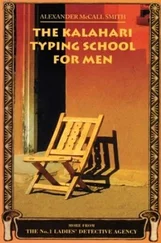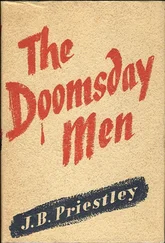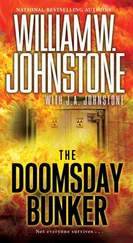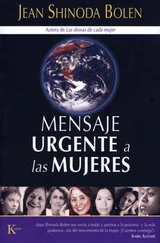George Ponderevo’s bleak view of an atomic apocalypse that comes not with a bang but a whimper was also an accurate reflection of the science of the day. The unchanging atom of Newton and Dalton was replaced by a chaotic atom that one writer described in 1903 as ‘the scene of indescribable activities, a complex piece of mechanism composed of thousands of parts, a star-cluster in miniature, subject to all kinds of dynamical vicissitudes, to perturbations, accelerations, internal friction, total or partial disruption.’ 94
With this dynamic view of matter came the equally strange idea that instead of being solid, the atom consisted mostly of echoing space: ‘the ratio of an atom to an electron… is the ratio of St Paul’s Cathedral to a full stop’. The British writer Dr Caleb Williams Saleeby developed the now standard analogy as early as 1904: ‘Just as the planets are revolving around a centre, so the electrons in each of the atoms that go to make up those planets are also revolving round an atomic centre – revolving at a speed hundreds of times faster than the speed of the planets which they compose.’ 95
This dramatic image of atoms as miniature solar systems was published seven years before Ernest Rutherford showed that atoms do indeed have a tiny, compact nucleus surrounded by electrons. Such ideas often gain popular currency before they are given the seal of scientific authority. Indeed, the history of scientific superweapons shows that the imaginations of writers like H. G. Wells have been way ahead of the scientists and the generals.
As we shall see, fiction and the popular imagination often work together to give an idea critical momentum, eventually allowing it to cross from fantasy to reality. The foresight of fiction writers was acknowledged after the terrorist attacks on the World Trade Center and the Pentagon on September the 11th, 2001. After this audacious strike, the FBI paid a visit to Hollywood to find out what possible terrorist scenarios the scriptwriters thought might be in store for America in the new era of ‘asymmetric warfare’. It emerged in 2002 that al-Qaeda terrorists had themselves been inspired by Hollywood. Prisoners revealed that they watched Roland Emmerich’s 1998 remake of the cold-war classic Godzilla and hoped to emulate the monster’s destruction of landmark buildings in New York, such as the Brooklyn Bridge. Similarly, science and fiction came together in the dream of the superweapon to produce some of the world’s most terrible weapons of mass destruction.
The world, it seemed, was built not on solid rock but on shifting sands. Matter was dynamic and unstable. To X-rays and radio waves, apparently impenetrable ‘solid’ matter was transparent. People began to look at the world around them with new eyes. When the artist Wassily Kandinsky first read about Rutherford’s new theory of atomic structure, it hit him with a ‘frightful force, as if the end of the world had come. All things became transparent, without strength or certainty.’ 96But there were still stranger revelations to come.
In 1895, the inventor of Wells’s time machine had explained that ‘Time is really only a fourth dimension of Space’. Two years later, Wells’s Invisible Man used a ‘geometrical expression involving four dimensions’ to make his great yet tragic discovery. Joseph Conrad was so taken by the idea of time as an extra dimension that he attempted a scientific romance of his own on the subject. He had seen an X-ray machine in operation in 1898 and had been moved to comment that ‘there is no space, time, matter, mind as vulgarly understood, there is only the eternal something that waves and the eternal force that causes the waves…’ 97
Conrad’s novel The Inheritors: An Extravagant Story (1901), which he co-wrote with Ford Madox Ford (who used his family name, Hueffer), is a strange work about a conspiracy masterminded by people from the ‘Fourth Dimension’ – the future. The ‘Dimensionists’ hoped to begin their ‘reign of terror’ imperceptibly: ‘They were to come like snow in the night: in the morning one would look out and find the world white.’ 98This paranoid idea of a secret coup taking place beneath a surface of apparent normality anticipates the alien invasion themes of 1950s America, in films such as Invasion of the Body Snatchers . Conrad’s inspiration was not fear of invasion, but the revelation of X-rays and the new dimensions of mathematics and physics: the disturbing realization that the world was full of forces and radiations that no one had thought possible.
Ten years after Wells’s Time Traveller entered the fourth dimension and glimpsed the end of the world, Albert Einstein, an unknown patent officer from Berne in Switzerland, would transform the scientific understanding of time and space, overthrowing the absolutes of Newtonian physics and laying the foundations of a ‘new physics’ that would be as strange as the wildest dreams of science fiction writers. In that same year, this physicist who grew up surrounded by the latest electrical inventions would also set out the mathematics that proved something scientists and their public were just beginning to grasp: the equivalence of matter and energy. An atom of matter was indeed a vast and terrible reservoir of energy, as Frederick Soddy had predicted. The revolution had truly begun.
It would be many years, however, before the new physics could reveal to the world the full power of the atom. It was not physics but the science of the previous century, chemistry, that first attempted to create a means of destruction so awesome that – as in Bulwer-Lytton’s novel – war would be unthinkable. The dream of the superweapon was about to become reality.
One must understand that the greatest evil that can oppress civilized peoples derives from wars, not, indeed, so much from actual present or past wars, as from the never-ending and constantly increasing arming for future war. To this all of the nation’s powers are devoted, as are all those fruits of its culture that could be used to build a still greater culture.
Immanuel Kant,
Speculative Beginning of Human History (1786)
5
The Prospero of Poisons
I have to confess that I felt rather proud of the simple device of my suffocating cloud. The Prospero of poisons, the Faustus of the front bringing mental magic to modern armament.
Tony Harrison,
Square Rounds (1992)
In spring 1915, a gunshot shattered the night-time silence of Dahlem, a leafy suburb of Berlin. It was closely followed by the sound of another shot, this time more muffled. Clara Haber was still alive when her son found her, lying on the lawn outside their house. At first, thirteen-year-old Hermann couldn’t work out what had happened. Was it a bungled burglary, or had his mother disturbed enemy agents trying to sabotage his father’s top-secret war work?
Beside Clara’s crumpled body lay his father’s army pistol. A few weeks ago he had held it in his young hands. He had been surprised how heavy it was – a dead weight of cold steel. In the grey light of the early dawn, Hermann could see a bloody stain on his mother’s dress. She had been shot point blank in the chest. He ran from Clara’s side to rouse his father, but Fritz Haber was still in a deep chemical sleep, heavily sedated with sleeping pills, and had not heard his wife shoot herself through the heart.
A few hours earlier, at their home in the grounds of the recently founded Kaiser Wilhelm Institute for Physical Chemistry and Electrochemistry, they had all been celebrating Fritz Haber’s return from the Western Front. Professor Haber, the Institute’s director, cut a striking figure that evening. With his new military uniform, his shaven bullet-head and duelling scar, he looked every inch the Prussian officer. The Kaiser had just promoted him to the rank of captain, a meteoric rise in a society which honoured military virtues above all others. Soon he would be awarded the ultimate military accolade in the Kaiser’s gift: the Iron Cross.
Читать дальше












